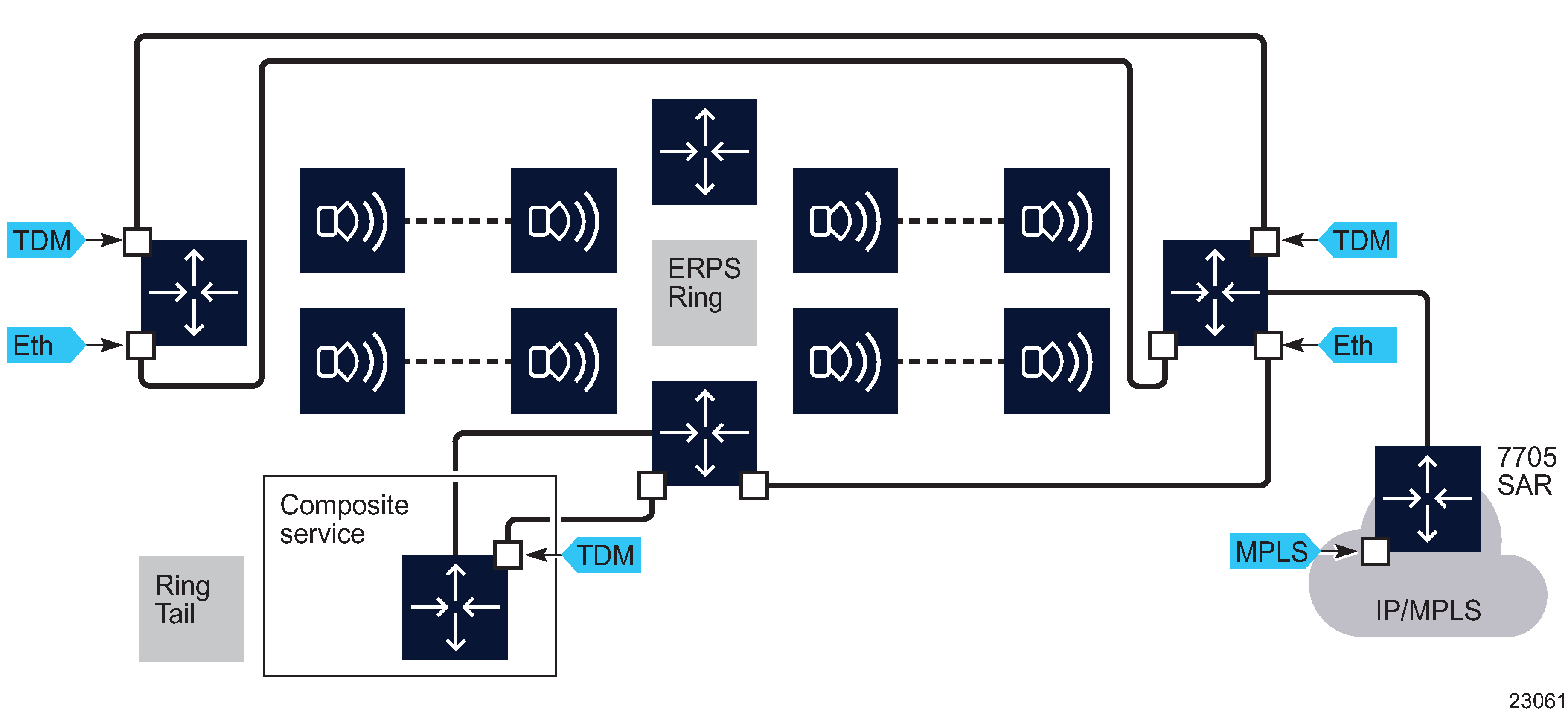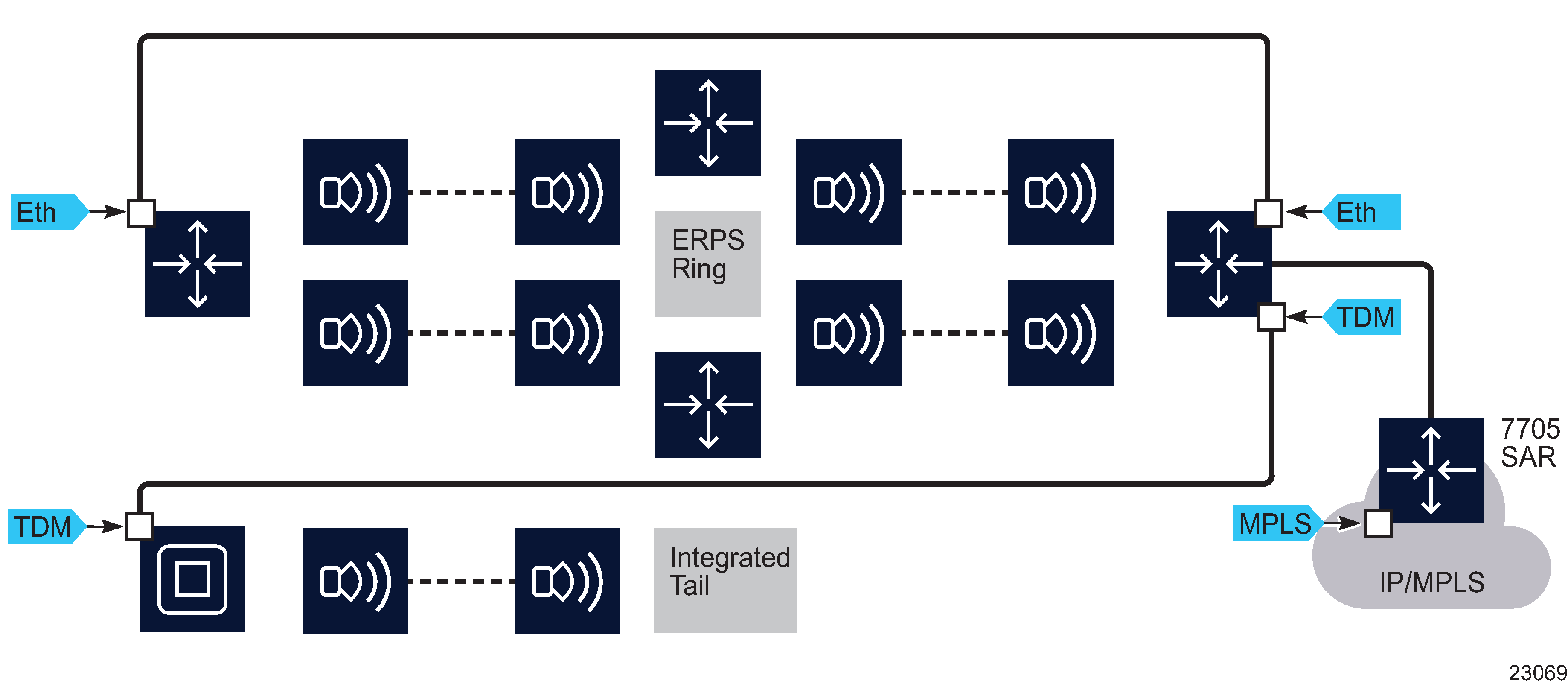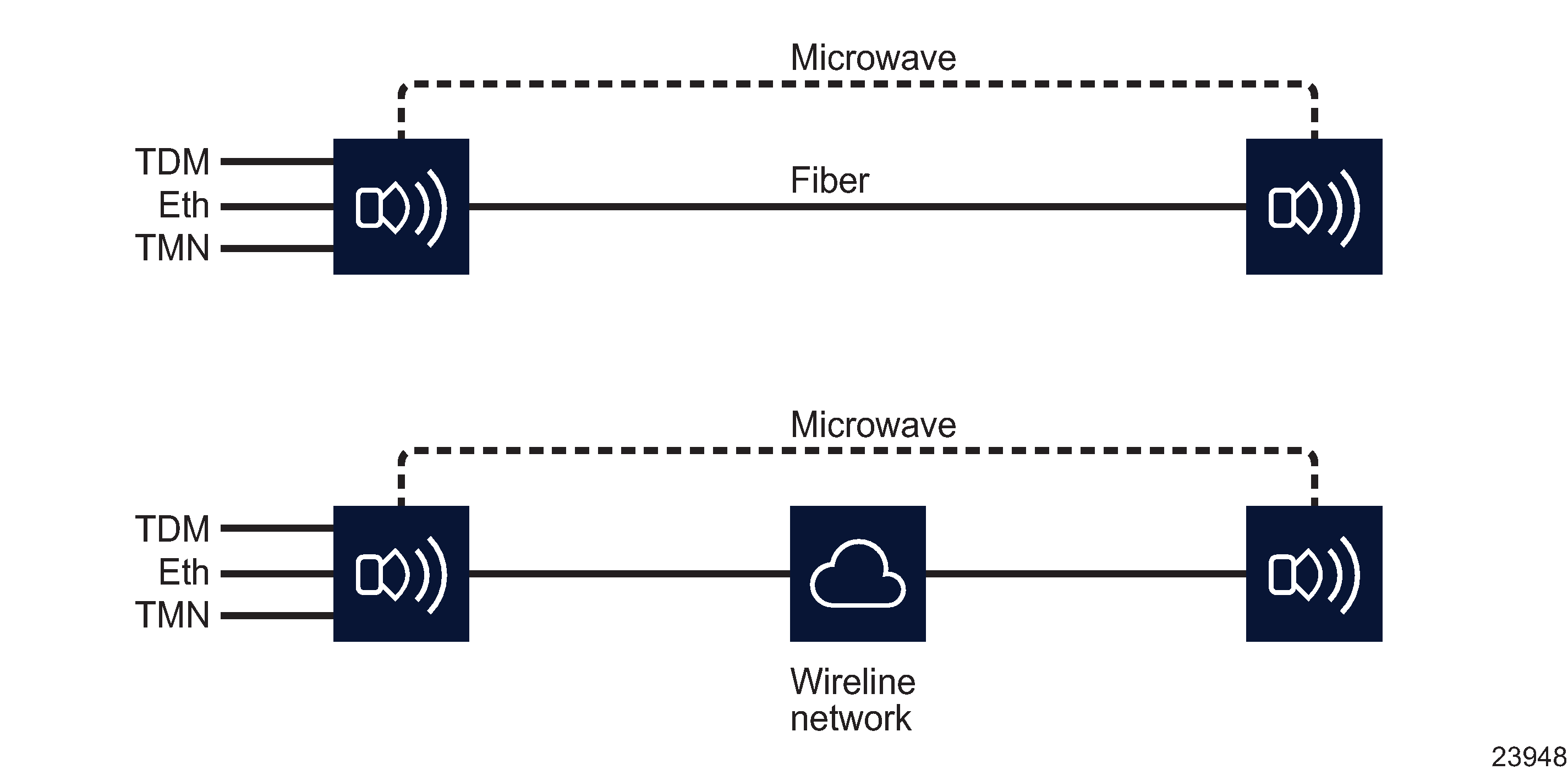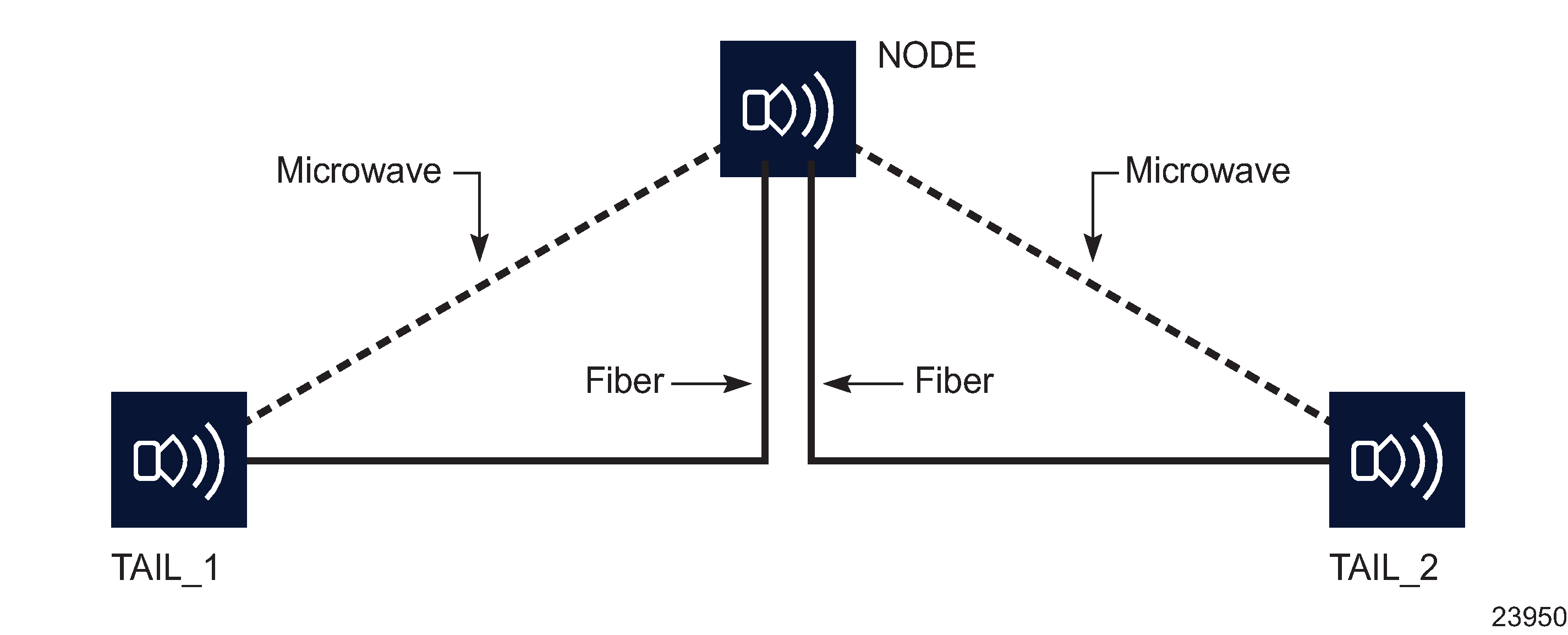Overview
General information
A service tunnel is an entity used to unidirectionally direct traffic from one device to another device. The service tunnel is provisioned to use a specific encapsulation method, such as GRE or MPLS, and the services are then mapped to the service tunnel. See the “Service tunnels” chapter in the NSP NFM-P Classic Management User Guide for the complete list of supported objects that service tunnels can be configured for.
Wavence service tunnel (ERPS) support
You can configure the Wavence using an ERPS topology to create a collection of Ethernet ring nodes to form a closed physical loop. Between two and sixteen Ethernet ring nodes are supported per ERPS topology. The Wavence ERPS support includes tail nodes that connect to ERPS ring nodes. Multiple tail node configurations are supported by NFM-P.
See the “Service tunnels” chapter in the NSP NFM-P Classic Management User Guide for information about Ethernet (G.8032) rings and the Wavence ERPS tail node support, and the service types supported. See To create an Ethernet radio ring on a Wavence for information about how to create an Ethernet Radio ring element on a Wavence.
Ethernet (G.8032) ring support
Ethernet Ring Protection (ERP), as specified in ITU-T G.8032, is a protection mechanism for Ethernet ring topologies that provides a resilient Ethernet network. ERP provides sub-50 ms protection and recovery switching for Ethernet traffic in a ring topology while ensuring that loops are not formed at the Ethernet layer. G.8032v1 supports a single ring topology; G.8032v2 supports multiple rings/ladder topology. For more information about Ethernet (G.8032) rings, see the ITU website at http://itu.int.
ERP topology support
An ERP topology is a collection of Ethernet ring nodes that forms a closed physical loop.
The following are the characteristics of an ERP topology:
-
Two to sixteen Ethernet ring nodes are supported per ERP topology.
-
Two adjacent Ethernet ring nodes that are participating in the same ERP topology are connected by Ethernet ring links.
Loop avoidance in the ring is achieved by guaranteeing that, at any time, traffic may flow on all but one of the ring links. This link is called the ring protection link (RPL). One designated node, the RPL Owner (also referred to as the master node), is responsible to block traffic over the RPL.
Wavence ERPS tail node support on Ethernet (G.8032) rings
NFM-P supports configuration of tail nodes on Ethernet rings.
You can create several tail network configurations (see Figure 14-1, Wavence ERPS tail node configuration (sample 1) and Figure 14-2, Wavence ERPS tail node configuration (sample 2) below) on the Wavence including:
-
a tail network of one or more MSS-4/8/E/HE/XE or UBT-NIM shelves attached to the ring to create, for example, a tree or linear chain
-
a tail network of one Wavence SA attached to the ring to create a Wavence SA extension
-
a head-end network of one or more MSS-4/8/E/HE/XE or UBT-NIM shelves
Figure 14-1, Wavence ERPS tail node configuration (sample 1) and Figure 14-2, Wavence ERPS tail node configuration (sample 2) show sample configurations of ERPS tail nodes.
Figure 14-1: Wavence ERPS tail node configuration (sample 1)

Figure 14-2: Wavence ERPS tail node configuration (sample 2)

Wavence ERPS tail node service provisioning
On supported Wavence MSS-4, MSS-8, and MSS-E/HE/XE shelves, you can provision any service on a tail node; for example, TDM-over-Ethernet using a hybrid path. The services can terminate on a ERPS ring node or on another tail node. For the Wavence SA, a single hop is supported by allowing a service to terminate on a network Radio port. The service terminates on the Radio port as a network attachment with a remote node is the target. You can add a manual link for the Wavence SA on the NFM-P map to provide a representation of the Wavence SA-to-MSS relationship on the ring. A one-hop Wavence SA tail node can also be used in a more traditional Wavence network. See Chapter 15, Wavence microwave backhaul service management for the workflow to create microwave backhaul services on Wavence devices.
Wavence ERPS fiber-microwave protection
You can configure fiber-microwave protection for services that traverse Wavence devices, to protect a fiber link with a microwave link when you create the Ethernet Radio ring element for a Radio ring, fiber ring, or mixed ring configuration. See To create an Ethernet radio ring on a Wavence.
The fiber link can be a fiber connection between two Wavence NEs or a wireline network connection between two Wavence devices, where the Wavence access to that wireline network uses a fiber connection.
Figure 14-3: Fiber-microwave protection on the Wavence

Figure 14-4: Fiber-microwave protection - operation

Figure 14-5: Fiber-microwave protection on tail nodes

Daisy chain is supported only for VLAN services. See Chapter 15, Wavence microwave backhaul service management for more information about configuring VLAN services on Wavence devices.